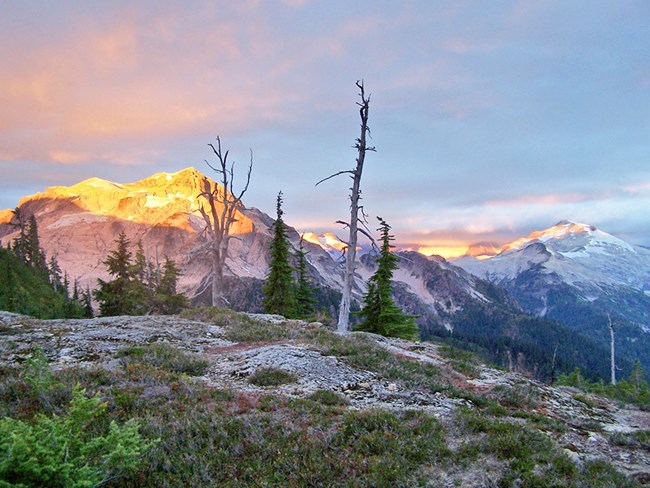
NPS
Vascular plant communities are an important component of National Park biodiversity. Operationally, vegetation characteristics such as dominant plant species, canopy cover, or stand age are often used to classify landscapes prior to identification of management zones or development of management plans or as a stratification level in research projects and long-term monitoring programs. Functionally, plants influence hydrologic and biogeochemical processes, nutrient cycling, disturbance patterns, wildlife habitat, and patterns of human use. Changes in plant distribution, abundance, and phenology are valuable indicators of current and past environmental and climate factors and the influence of stressors to ecosystems.
Vegetation research and monitoring in parks of the North Coast and Cascades Network include:
- Long-term monitoring of forests, low-elevation prairies, whitebark pine, and subalpine vegetation conducted by the North Coast and Cascades Network Inventory & Monitoring Program
- Monitoring of plant phenology (timing of flowering) as an indication of the influence of warming climates on plant function. Three citizen science projects are on-going in Mount Rainier and North Cascades: University of Washington’s MeadoWatch; NPS Cascades Butterfly Project, and Walking with Wildlflowers, monitoring plant phenology along the Pacific Crest Trail
- Forest Health – forest health is monitored by the NPS Inventory & Monitoring Program and the USDA Forest Service. The US Forest Service monitors forest health aerially and through the Forest Inventory & Analysis Program (FIA)
- Restoration of native plant communities: we restore and monitor native prairies at San Juan Island National Historical Park and Ebey’s Landing National Historical Reserve and a variety of riparian, forest, intertidal, and subalpine plant communities in other network parks
- Changes in plant community distribution and composition over time is currently being studies in North Cascades and Mount Rainier National Parks
- Influence of air pollution on native plant and soil processes
Last updated: July 13, 2023
